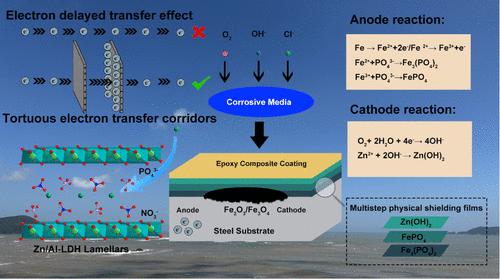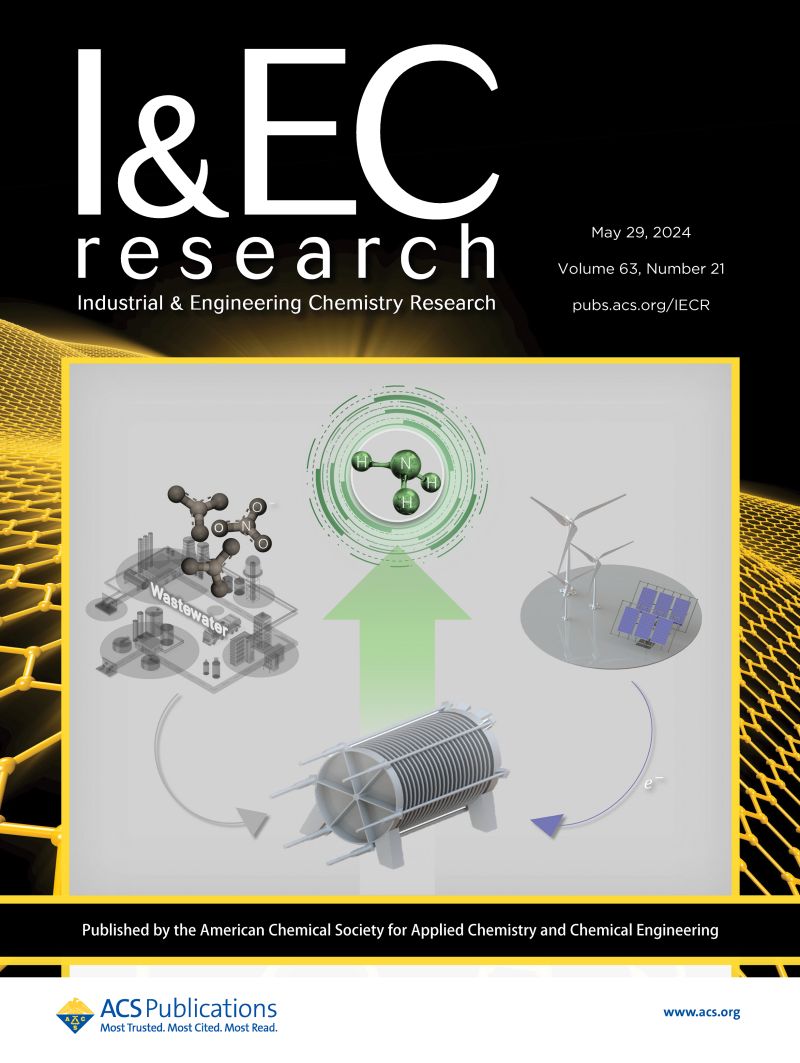In-Situ Synthesis and Synergistic Anticorrosion Performance of the Sr5(PO4)3OH/Zn/Al-LDH Composite with an Intercalated Spherical Structure
IF 3.8
3区 工程技术
Q2 ENGINEERING, CHEMICAL
引用次数: 0
Abstract
Capturing corrosive ions in corrosive media is an important method to inhibit corrosion. The strontium hydroxyphosphate/zinc/aluminum layered double hydroxide (Sr-HAP/LDH) composite with an intercalated spherical structure was effectively synthesized using the in-situ growth method, and it possesses multiple synergistic anticorrosion advantages. The combination of zinc/aluminum layered double hydroxide (Zn/Al-LDH) and strontium hydroxyphosphate (Sr-HAP) improves the specific capacitance, enhances electron storage, and reduces electron transfer, thereby lowering the corrosion rate. The intercalated spherical structure of the Sr-HAP/LDH composite effectively blocks electrolyte penetration. Additionally, through the Zn/Al-LDH immobilization mechanism and anion exchange, the Sr-HAP/LDH composite releases PO43– from the interlayer to chelate with Fe2+ and Fe3+, while trapping the corrosive Cl– ions within the interlayer. The electrochemical tests showed that the corrosion resistance of the Sr-HAP/LDH composite with multiple corrosion protections was 340.0% higher than that of epoxy resin and 190.4% higher than that of Sr-HAP coatings. This research offers an innovative approach for designing efficient anticorrosion materials, with significant theoretical implications and promising practical applications.

求助全文
约1分钟内获得全文
求助全文
来源期刊

Industrial & Engineering Chemistry Research
工程技术-工程:化工
CiteScore
7.40
自引率
7.10%
发文量
1467
审稿时长
2.8 months
期刊介绍:
ndustrial & Engineering Chemistry, with variations in title and format, has been published since 1909 by the American Chemical Society. Industrial & Engineering Chemistry Research is a weekly publication that reports industrial and academic research in the broad fields of applied chemistry and chemical engineering with special focus on fundamentals, processes, and products.
 求助内容:
求助内容: 应助结果提醒方式:
应助结果提醒方式:


